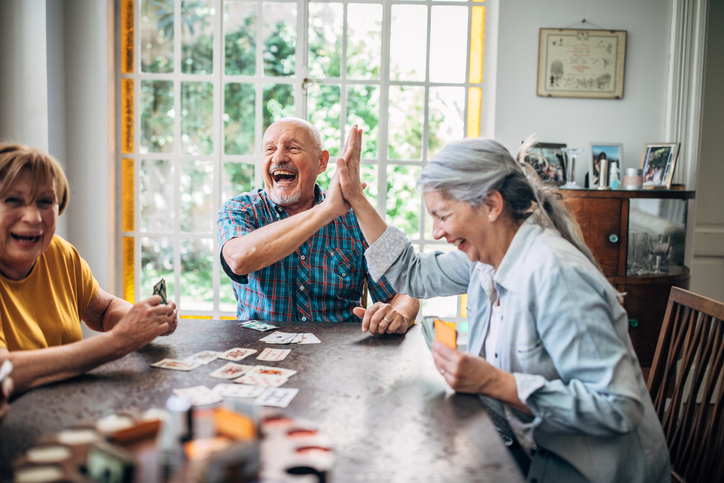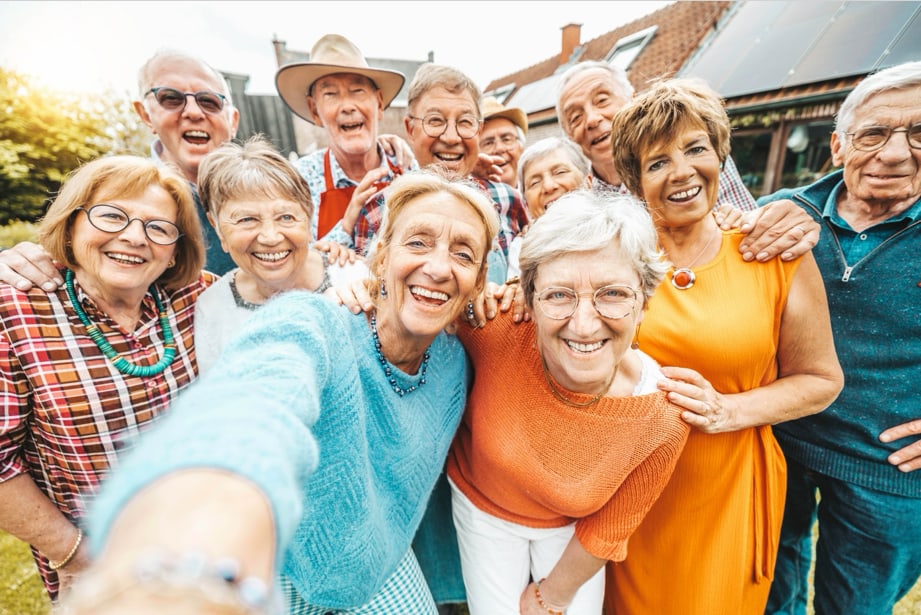Bingo nights, impromptu barbecues, a walk with friends – such seemingly simple, routine social activities are actually vitally important to maintaining our mental, physical, and emotional health especially as we age. Research shows that seniors who remain socially active enjoy lower levels of depression and improved overall mood and memory.
Maintaining an active social life may look and feel a bit different in retirement. It is common for social circles to shrink as friends or family move away or even pass on. Maintaining connections or forging new ones may feel a bit difficult at first, but the more you try the easier it will become! Read on to find a few tips for staying socially engaged with ease during your retirement years.
Social Interaction Activity #1: Stay in Touch — How often do we let days or even weeks go by without reaching out to friends and family? Make an effort to schedule time to connect with loved ones via Zoom, phone call, or FaceTime; it will brighten your day, strengthen your connections, and uplift your spirits.
Social Interaction Activity #2: Take a Class — Maybe you have always wanted to learn French or Italian, or perhaps you stopped taking piano lessons years ago and would like to finally learn “Rhapsody in Blue.” Taking classes at the neighborhood senior center, community college, or educational annex is an easy way to explore and learn new things; you might even meet new like-minded friends in the process.
Social Interaction Activity #3: Get a Job — Just because you retired from one job doesn’t mean that you cannot enjoy another. Consider applying for a part-time shift at the bookstore or coffee shop you love visiting. Think about donating a few hours each week to your church or favorite charity, or even to someone in your neighborhood whom you know could use a little help. The rewards, whether monetary or emotional, will be great for you and for those you serve.
Social Interaction Activity #4: Get in Shape — Maintaining muscle mass and bone density, along with increasing mobility and overall well-being, are just a few of the health benefits of staying active. Joining a gym or a class at the YMCA will also connect you to people who are committed to staying healthy. Consider planning pickleball or tennis games, walks in the park, or gym sessions with friends who enjoy staying active, too.
Social Interaction Activity #5: Spend (a Little) Time on Social Media — Reconnecting with friends and family across time and distance on social media is a great way to stay engaged. Who doesn’t love hearing stories about the grandkids or seeing pictures of their new puppy? Just remember that misinformation, scams, and other undesirable elements abound on the internet, so it pays to be proactive in setting boundaries around how much time you spend on social media and what types of information you engage with.
Social Interaction Activity #6: Revisit Your Hobbies — Are you a lifelong home chef or baker? An expert macramé maker? A muscle car or antique enthusiast? You might choose to find others who are interested in your unique hobbies and schedule time for you all to enjoy them together.
Take the First Step — Don’t let these suggestions lead to overwhelm; consider taking one small step each week, such as calling a friend or joining a tennis class and build on your social connections and activities slowly. Making small efforts over time will result in a healthy, active social life from which you’ll benefit mentally, physically, and emotionally. Bridge Senior Living communities prioritize connection and engaging activities, which makes incorporating them into your lifestyle and meeting new friends effortless. Visit the Bridge Senior Living website to learn more about our Bridge Senior Living communities and how we can help seniors live a socially active lifestyle.
Research Cited
1Plus One, “The impact of leisure activities on older adults’ cognitive function, physical function, and mental health,” November 2019, https://journals.plos.org/plosone/article?id=10.1371/journal.pone.0225006.









